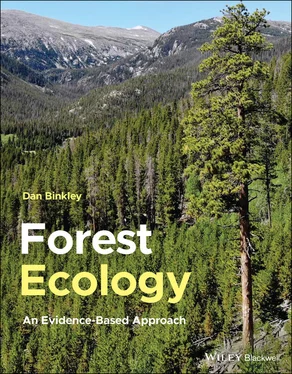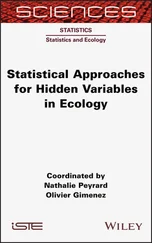Dan Binkley - Forest Ecology
Здесь есть возможность читать онлайн «Dan Binkley - Forest Ecology» — ознакомительный отрывок электронной книги совершенно бесплатно, а после прочтения отрывка купить полную версию. В некоторых случаях можно слушать аудио, скачать через торрент в формате fb2 и присутствует краткое содержание. Жанр: unrecognised, на английском языке. Описание произведения, (предисловие) а так же отзывы посетителей доступны на портале библиотеки ЛибКат.
- Название:Forest Ecology
- Автор:
- Жанр:
- Год:неизвестен
- ISBN:нет данных
- Рейтинг книги:5 / 5. Голосов: 1
-
Избранное:Добавить в избранное
- Отзывы:
-
Ваша оценка:
- 100
- 1
- 2
- 3
- 4
- 5
Forest Ecology: краткое содержание, описание и аннотация
Предлагаем к чтению аннотацию, описание, краткое содержание или предисловие (зависит от того, что написал сам автор книги «Forest Ecology»). Если вы не нашли необходимую информацию о книге — напишите в комментариях, мы постараемся отыскать её.
Forest Ecology
An Evidence-Based Approach Forest Ecology: An Evidence-Based Approach
Forest Ecology: An Evidence-Based Approach
Forest Ecology — читать онлайн ознакомительный отрывок
Ниже представлен текст книги, разбитый по страницам. Система сохранения места последней прочитанной страницы, позволяет с удобством читать онлайн бесплатно книгу «Forest Ecology», без необходимости каждый раз заново искать на чём Вы остановились. Поставьте закладку, и сможете в любой момент перейти на страницу, на которой закончили чтение.
Интервал:
Закладка:
Forests change across landscapes, and some of the changes result from gradients in environmental factors such as temperature and available water. Patterns of forest change across landscapes relate broadly to patterns of environmental factors, such as typical changes in the dominant species as elevation increases in mountains ( Figure 2.1). Some broad generalizations may explain general patterns: temperatures are lower at higher elevations, and precipitation is generally (but not always) higher. The underlying details that influence both the broad patterns and specific cases are a bit complex and highly interacting. This chapter develops a foundation for understanding the fundamental physics that influence tree occurrence and growth. Later chapters expand to examine how ecological interactions (including plants, animals and microbes) and environmental factors combine to shape forests.
All the chemical and biological processes within a forest are driven by physical processes: environmental temperatures, water regimes, and solar radiation. In turn, the chemical and biological processing of solar energy shape the microenvironmental conditions found in forests. Interception of sunlight by trees not only drives photosynthesis, it leads to evaporation of water from leaves, cooling the leaf and increasing the humidity of the air. Evaporation of water from leaves (transpiration) physically lifts masses of water and nutrients from the soil up to the canopy, and cools leaves heated by sunshine. Energy “fixed” through photosynthesis cascades down a series of chemical reactions, driving the forest's chemistry and biology until all the energy has been dissipated as heat. All the interesting biology and ecology that occur in forests take place within this physical system.
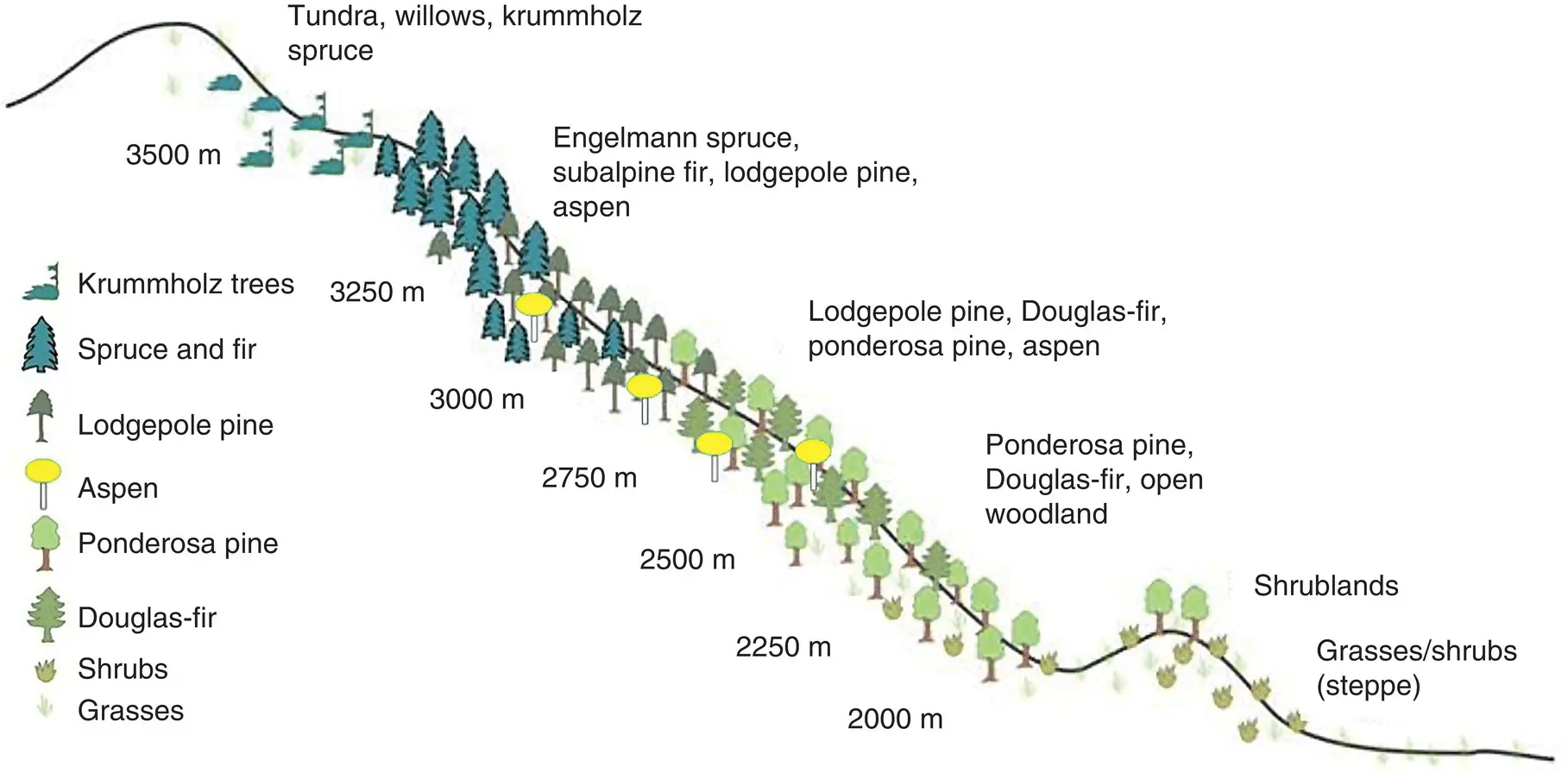
FIGURE 2.1 The vegetation in the Front Range of the Rocky Mountains in northern Colorado, USA grades from primarily grass/shrub domination at low, dry elevations, through open pine‐dominated woodlands, to aspens mixed with a variety of conifers, to forests of spruce and fir and then to tundra (alpine) at the highest elevations
( Source:based on a diagram from Laurie Huckaby).
The patterns depend on direct effects of environmental factors on tree physiology, and also environmental influences on fires, insects, and other forest‐shaping agents.
Climate Influences Where Forest Occur, and How They Grow
The distributions of forests can be mapped across the world, showing regions where major forest types occupy most of the landscapes ( Figure 2.2). Forests essentially occur everywhere there is enough water for trees to cope with evaporative demands driven by temperature and atmospheric humidity. The two exceptions to this generalization would be areas that are too cold, and areas that have enough water but high frequency of fires leads to greater success of grasses and fire‐tolerant shrubs.
The productivity of the world's vegetation has been mapped by satellites, where the wavelengths of light reflected from vegetation across time periods are combined with simulation models to estimate growth rates. Such global estimates may come close to pegging the actual global averages and totals, but the accuracy for any single region or landscape would need to be verified for confidence (as with any map).
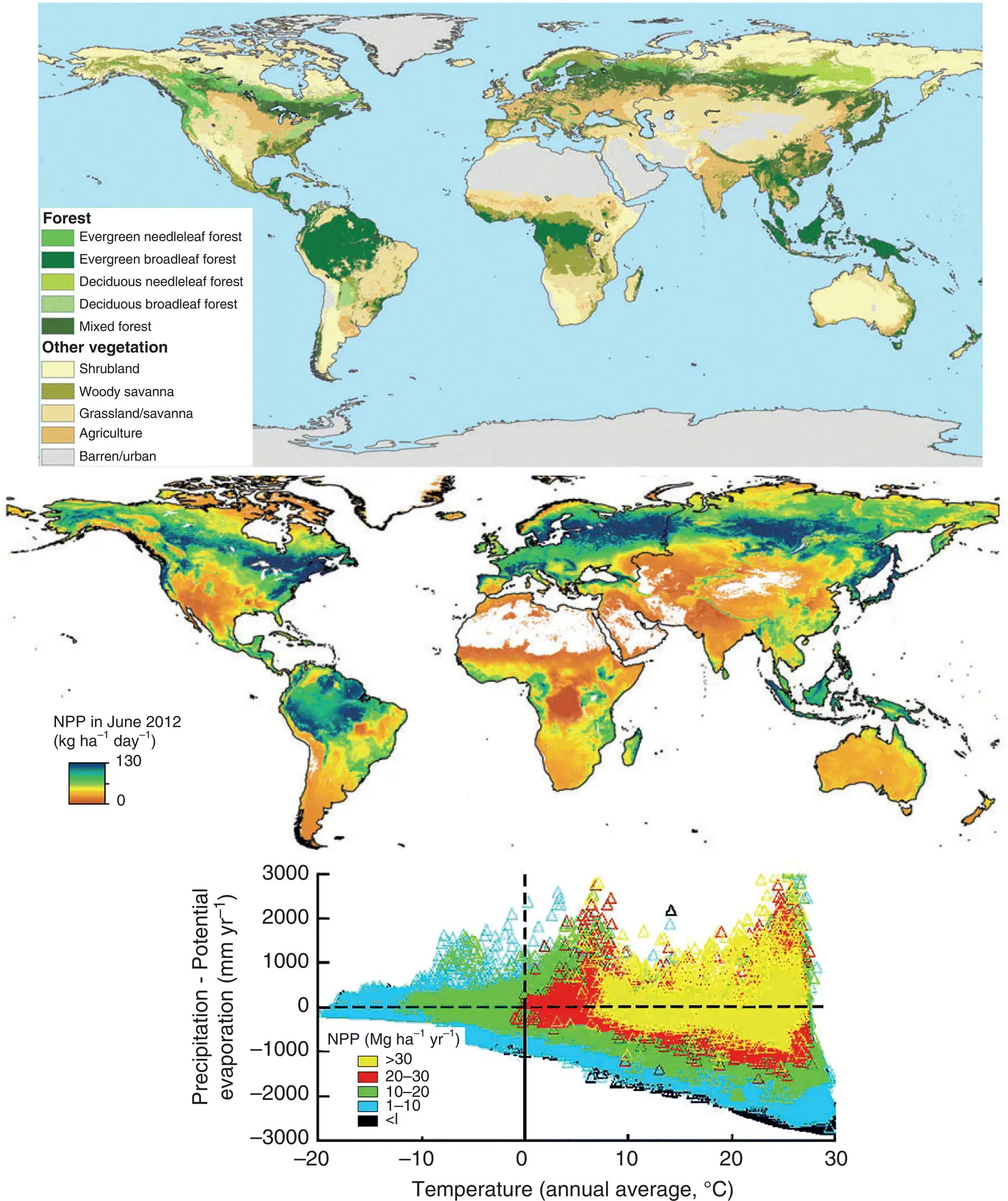
FIGURE 2.2 The distributions of major types of forests can be mapped across the world (upper), along with typical rates of aboveground net primary production of forests and other vegetation types (middle; for more information on production, see Chapter 7;
Source:maps based on Pan et al. 2013).
The spatial patterns can also be examined in a functional way, where aboveground net primary production is plotted relative to annual temperatures, and the balance between precipitation and the energy available to evaporate water (wetter conditions occur above the 0 point on the Y‐axis;
Source:Based on Running et al. 2004.
The same information can be examined in relation to environmental factors rather than spatial locations ( Figure 2.2). It's not surprising that the most productive forests (and other vegetation types) tend to occur in warmer locations where precipitation is close to (or higher than) the water that could be evaporated by available energy. Is it possible to be too warm for high growth rates, even where plenty of water is available? This is not clear from Figure 2.2, but the hottest tropical forests do appear to have lower growth rates than somewhat cooler forests (see Figure 2.18).
Warmer Forests Have More Species of Trees
Patterns in forests across environmental gradients can also be examined in terms of structure and species composition. Trees tend to be taller under favorable environmental conditions of moderate‐to‐warm temperatures and high rainfall ( Figure 2.3). Part of the geographic pattern in tree heights relates to the physics of supplying leaves high above the ground with sufficient water to meet the evaporative demand of the atmosphere; dry air requires more water than the tallest trees could transport (see Chapter 4). The number of species found in forests is low at higher elevations, and high at lower elevations and in warmer areas.
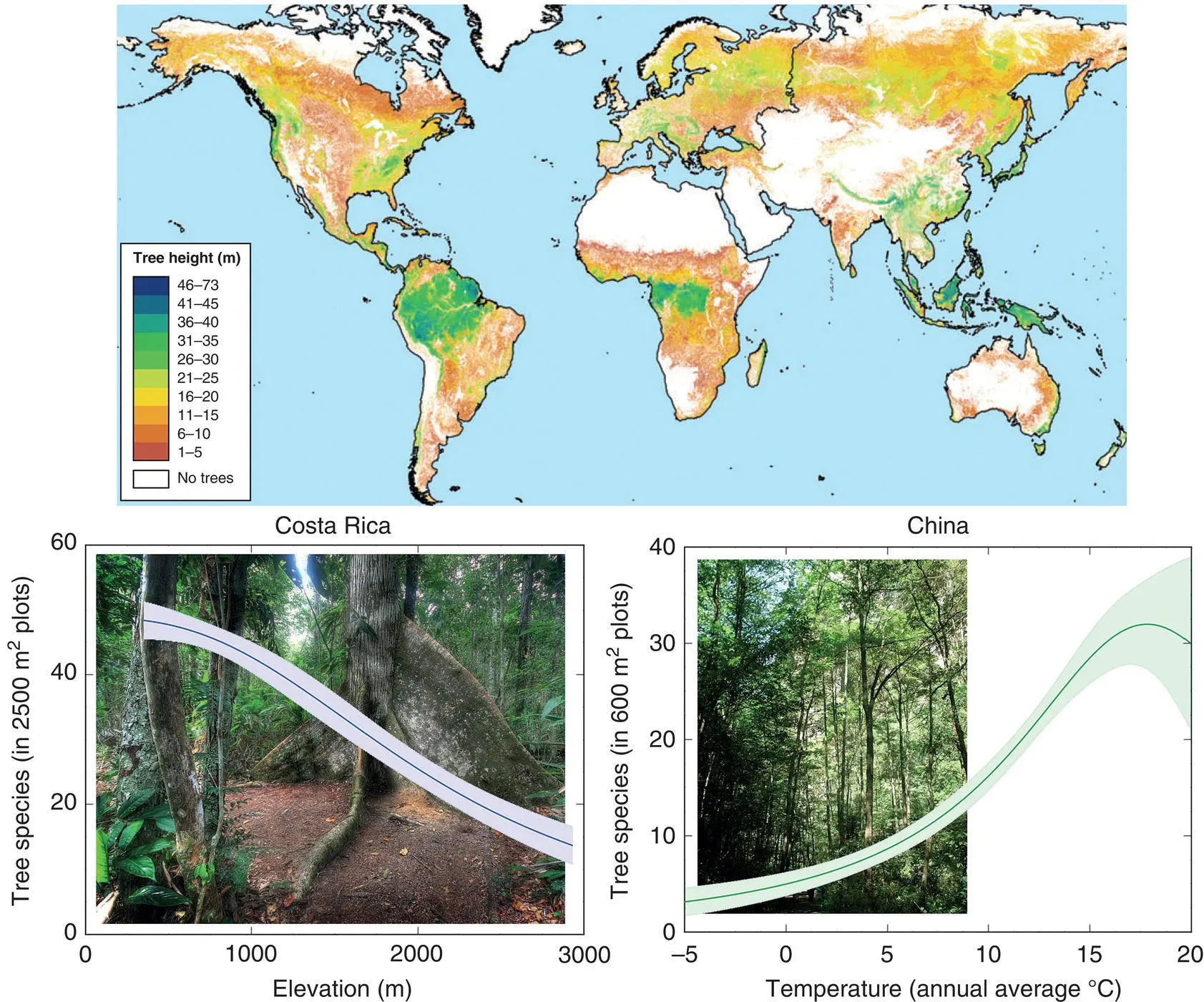
FIGURE 2.3 The tallest trees in the world occur in cool, wet locations, and most tall trees are limited to relatively wet areas. More severe growing conditions limit average tree heights
( Source:upper map, from Pan et al. 2013/Annual reviews,Inc.).
The diversity of tree species in a tropical forest in Costa Rica dropped by about half with a 1000 m increase in elevation (lower left,
Source:Data from Veintimilla et al. 2019, photo by Cristian Montes).
Across eastern China, the number of tree species that co‐occur in 600 m 2(=0.06 ha) plots increases rapidly with temperature, but levels off (and might even decline) on the hottest sites.
Source:Based on Wang et al. 2009.
Chemical and Biological Reactions Go Faster with Increasing Temperature
Extreme temperatures tend to stop biological processes. Little biological activity occurs below the freezing point of water, and at very high temperatures organs fail and organisms die. Between these extremes, most biological processes respond strongly to temperature, often changing by a factor of two or more for a 10 °C change in temperature ( Figure 2.4). Chemical reactions may follow a simple trend, but the response of biological processes derives from a suite of interacting factors. Some biological reactions such as respiration (the oxidation of carbon compounds to release energy and CO 2) may show an exponential temperature trend, as the effect of temperature on breakdown of carbon compounds is similar to simple chemical reactions.
The temperature effect on more complex biochemical reaction rates includes any effects on the breakdown and regeneration rates of enzymes and other proteins. Biological reactions also change as temperatures affect the supplies of reactants. Higher temperatures lead to greater evaporative stresses, which reduce the supply rate of carbon dioxide flowing into leaves. The products of reactions can suppress rates of further reaction if they accumulate in cells, which can be a problem at high temperatures. Rates of photosynthesis do not increase with a simple exponential trend like rates of respiration ( Figure 2.3). The temperature effect on rates of photosynthesis might have a humped shape, reflecting the balance between carbon gains and losses in leaves, as photosynthesis declines in response to rising photorespiration (the diversion of energy to producing water rather than sugar).
Читать дальшеИнтервал:
Закладка:
Похожие книги на «Forest Ecology»
Представляем Вашему вниманию похожие книги на «Forest Ecology» списком для выбора. Мы отобрали схожую по названию и смыслу литературу в надежде предоставить читателям больше вариантов отыскать новые, интересные, ещё непрочитанные произведения.
Обсуждение, отзывы о книге «Forest Ecology» и просто собственные мнения читателей. Оставьте ваши комментарии, напишите, что Вы думаете о произведении, его смысле или главных героях. Укажите что конкретно понравилось, а что нет, и почему Вы так считаете.
